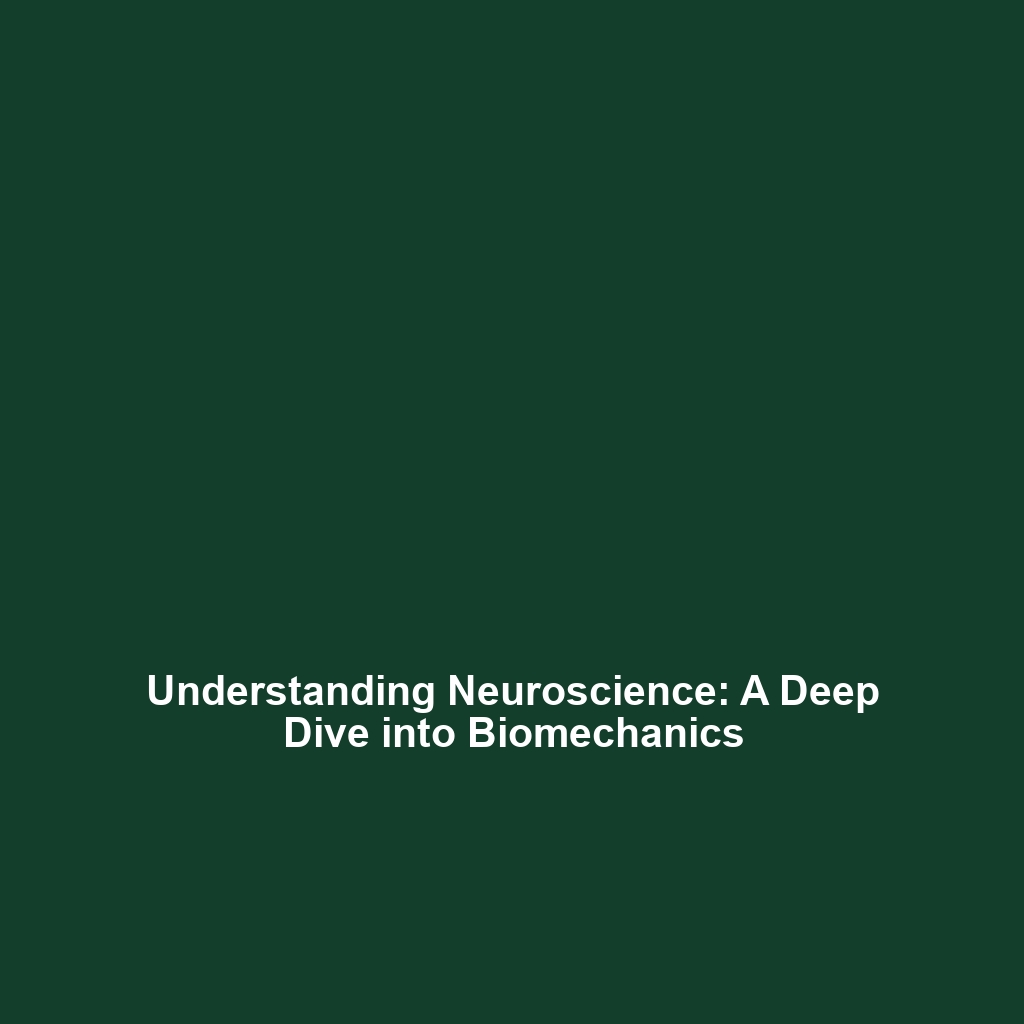What is Neuroscience?
Introduction
Neuroscience is a multidisciplinary field focused on the structure and function of the nervous system, playing a vital role in the study of biomechanics. Understanding how neural mechanisms influence movement, balance, and coordination enhances our grasp of human biomechanics. This article delves into the significance of neuroscience within biomechanics, highlighting its key concepts, real-world applications, challenges, and future research directions.
Key Concepts
Understanding Neuroscience
Neuroscience encompasses various subfields, including cognitive neuroscience, neurobiology, and neurophysiology. Some major concepts include:
- Neuroplasticity: The brain’s ability to adapt and reorganize itself.
- Motor Control: Mechanisms that govern movement initiation and execution.
- Neuromuscular Junction: The synapse where motor neurons connect with muscles, crucial for facilitating biomechanics.
These concepts are critical to biomechanical studies as they provide insights into how the nervous system interacts with musculoskeletal systems.
Applications and Real-World Uses
Neuroscience demonstrates numerous practical applications in biomechanics, showcasing how the two fields intertwine:
- Rehabilitation Programs: Utilizing neuroscience principles to develop therapies for restoring motor functions in stroke patients.
- Ergonomic Designs: Applying insights from neuroscience to create tools and workspaces that enhance human movement and reduce injury risks.
- Sports Performance: Using biomechanical analyses informed by neuroscience to optimize athlete training and performance.
These applications illustrate how neuroscience is used in biomechanics to further understand and enhance human capabilities.
Current Challenges
The study and application of neuroscience within biomechanics face several challenges:
- Complexity of Neural Networks: The intricate nature of the nervous system makes it difficult to understand all underlying mechanisms.
- Data Integration: Difficulty in combining data from various sources (e.g., neurological, biomechanical) presents significant challenges in research.
- Ethical Issues: Conducting research involving human subjects raises ethical considerations that must be diligently addressed.
These challenges highlight the ongoing issues in neuroscience and biomechanics that researchers are currently navigating.
Future Research and Innovations
The future of neuroscience in biomechanics is promising, with exciting innovations on the horizon:
- Brain-Computer Interfaces: Technologies enabling direct communication between the brain and external devices, revolutionizing assistance for mobility-impaired individuals.
- Wearable Technology: Innovations allowing for continuous biomechanical monitoring, providing real-time data to enhance performance and rehabilitation.
- Advanced Neuroimaging Techniques: New methods to visualize brain activity during biomechanical tasks, improving our understanding of the mind-body connection.
Such breakthroughs suggest a transformative future for both neuroscience and biomechanics, enhancing applications and therapeutic strategies.
Conclusion
In summary, neuroscience is integral to the field of biomechanics, providing essential insights into the neural control of movement and performance. As research advances, we can expect significant developments that will further bridge these two disciplines. For those interested in exploring related topics, consider reading about neuroplasticity and its implications in motor function recovery or delving into motor control mechanisms to understand movement better.


